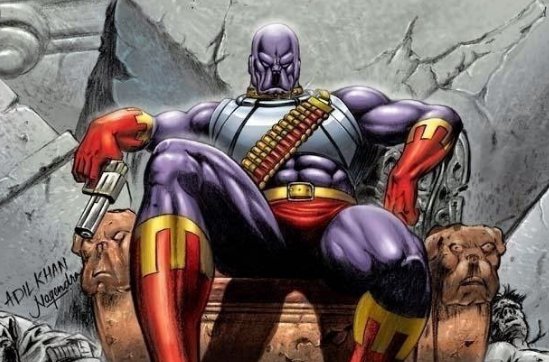
Umm, It’s Nostalgic!
I am from the 90s era, and these were the most lovely books I’ve ever read in my life.
Champak
Champak is a popular children’s magazine in India that has been entertaining and educating young readers since the 1960s.
- Content: Champak was known for its diverse content, including engaging stories, comic strips, puzzles, quizzes, and educational articles. The magazine aimed to entertain and impart moral values, knowledge, and life lessons to its readers.
- Stories: Champak featured a wide range of fictional stories that captured the imaginations of children. These stories often revolved around adventure, friendship, bravery, and moral dilemmas. Each story typically had a lesson or moral at the end to instill positive values in young readers.
- Characters: Champak had its own set of beloved characters that appeared regularly in its stories and comic strips. Some popular characters from the 90s included Cheeku the rabbit, Billoo the cat, Kalia the crow, and Chamataka the fox. Each character had unique traits and often found themselves in humorous or challenging situations.
- Illustrations: The magazine was known for its vibrant and lively illustrations that brought the stories and characters to life. The colorful artwork added an extra layer of visual appeal and helped children visualize the narratives better.
- Puzzles and Quizzes: Champak included various puzzles, brain teasers, and quizzes to engage young readers and stimulate their thinking abilities. These activities encouraged problem-solving skills, logical thinking, and general knowledge.
- Moral Values: Champak focused on promoting moral values and ethical behavior among children. Many of the stories conveyed important messages about honesty, kindness, courage, empathy, and the importance of family and friends.
- Educational Content: In addition to entertainment, Champak also provided educational content on a wide range of topics. It included informative articles on science, nature, history, and other subjects, aiming to enhance children’s knowledge and curiosity.
Champak continues to be published today, maintaining its commitment to entertaining and educating young readers. While the magazine has evolved over the years, the essence of its content and its impact on generations of Indian children remain cherished memories.
Nandan
“Nandan” is a popular children’s magazine in India that has been around since the 1960s. Although I don’t have access to specific information about “Nandan” magazines from the 90s, I can provide you with some general details about the magazine during that time.
- Target audience: “Nandan” primarily catered to children between the ages of 10 and 16. The magazine aimed to entertain, educate, and engage young readers through a variety of content.
- Content: The magazine featured a mix of fiction and non-fiction articles, stories, poems, puzzles, and games. It covered a wide range of topics, including science, history, mythology, literature, current affairs, and general knowledge.
- Literary works: “Nandan” published stories and poems by renowned Indian authors and poets. It often included serialized stories, folk tales, and myths from different regions of India. These literary works were carefully selected to inspire young readers and foster their interest in reading and storytelling.
- Illustrations: The magazine was known for its vibrant and engaging illustrations. Talented artists created captivating visuals that complemented the written content and enhanced the overall reading experience.
- Educational content: “Nandan” placed emphasis on education and knowledge-building. It featured informative articles on various subjects, designed to educate children in an entertaining and engaging manner. The magazine aimed to ignite curiosity and encourage a love for learning among its readers.
- Activities and games: To keep children entertained and interactive, “Nandan” included puzzles, quizzes, riddles, and games. These activities challenged young minds and encouraged problem-solving skills and critical thinking.
- Moral and value-based stories: The magazine often published stories that conveyed moral lessons and values. Through these stories, “Nandan” aimed to instill positive values, ethics, and character development in its readers.
“Nandan” has been a beloved magazine for generations of Indian children, providing a platform for creativity, imagination, and knowledge. While specific details may vary from issue to issue and over time, the magazine generally sought to engage and educate young readers in a fun and informative manner.
Raj Comics
Raj Comics, a popular Indian comic book publisher, has been known for its wide range of comic book titles, including superhero stories, action-adventure tales, and fantasy sagas.
- Chacha Chaudhary: Created by Pran Kumar Sharma, Chacha Chaudhary was one of Raj Comics’ most beloved characters. Chacha Chaudhary was a wise old man who used his intellect to solve crimes and protect the innocent, with his sidekick Sabu, a powerful alien.
- Nagraj: Nagraj, created by writer Parshuram Sharma and artist Pratap Mullick, was another popular character from Raj Comics. Nagraj was a superhero with snake-like abilities, known for his iconic red costume. His stories often revolved around fighting evil forces and defending the innocent.
- Super Commando Dhruva: Super Commando Dhruva, created by Anupam Sinha, was a young superhero who used his acrobatic skills and gadgets to fight crime. His stories focused on social issues and had a more realistic tone compared to other Raj Comics characters.
- Doga: Doga, created by Sanjay Gupta, was a unique and gritty superhero who had a traumatic past. With a dark and brooding persona, Doga waged a one-man war against corruption and criminals. His stories often delved into the dark underbelly of society.
- Bankelal: Bankelal, created by writer and artist Jitendra Bedi, was a mischievous and comical character. He was a self-proclaimed “King of Fools” and his stories revolved around his misadventures and humorous attempts at gaining power and wealth.
These characters and their stories provided children with thrilling and imaginative content in the 1990s. Raj Comics’ children’s magazines were filled with colorful illustrations, and engaging narratives, and often carried moral lessons for young readers.

![Data Anomaly: 7. A World Restored [Data Heist Series]](https://swanraga.com/wp-content/uploads/2023/10/pexels-photo-3861969.jpeg)